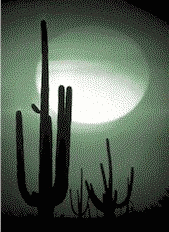Are women in veils the new WMDs?
No veiled threat
The niqab is not for everyone — I took it off after an hour — but those who choose to wear it should be respected
By SHEEMA KHAN
Source: Globe and Mail
Last week, I stopped at a local mosque to offer my sunset prayers before heading off to a restaurant for an iftar dinner with friends (iftar is the meal for breaking the daylong fast during the month of Ramadan). I met a pleasant young woman, who had removed her niqab (face veil) in the privacy of the women's section. She was gracious to all, offering dates and milk to break the fast. Her demeanour exuded a generous spirituality. While we spoke, she gently exhorted her children to stop running, restraining her exasperation when they disobeyed. What mother hasn't gone through the same?
At the restaurant, a niqabi woman came up to me whom I did not recognize at first. Her eyes glistened with familiarity. "Assalaamu alaikum, Sheema. I see you more often on TV than in person," she joked. I immediately recognized her voice. We had first met 15 years ago and had struck an instant friendship. Life had taken us in different directions; now we were both married with kids. She had memorized the entire Koran during that time, and was now teaching women and children to do the same. I felt humbled in the presence of her knowledge.
I respect women who wear the niqab. At Harvard, after much spiritual reflection, I donned the hijab (headscarf) and also tried the niqab -- for all of one hour. I found it stifling and unnatural. Yet others don't. And their choice should be respected. In some places, women are forced by the state to cover up. In other places, some have exercised their own choice to do so. At a recent scientific conference in Dubai, I met intelligent, assertive niqabis who discussed current research with both genders. What is the big deal?
The niqab has been in the news recently, often in the most unflattering terms. These new WMDs (women in Muslim dress) seem to evoke the same fear once reserved for real WMDs (weapons of mass destruction). The most vocal critics are European men in positions of power, with feminists being equally vocal or mute. Few have taken the time to understand the issue from veiled women themselves.
The debate is eerily similar to the discourse that took place during the British occupation of Egypt in the late 1800s. Intent on controlling the natives, the Empire sought to weaken nationalist sentiment by stripping away indigenous Egyptian identity. In the colonial hierarchy, Victorian England was the pinnacle of civilization; the rest had to be civilized.
Lord Cromer (Evelyn Baring), the first British proconsul of Egypt, viewed Islam as the "other" -- a faith utterly devoid of any good. In particular, he focused on the dress (i.e. the veil) and seclusion of Muslim women as emblematic of their oppression and inferiority. They were in need of rescue -- by the Empire. He pushed the feminist envelope to ostensibly liberate Egyptian women. Yet during his rule, he greatly reduced women's access to education. When he returned to England, he opposed the women's movement at every turn. Feminism was good for the colonized, but not for the colonizer.
Many members of the Egyptian elite internalized the superiority of British civilization, and championed Lord Cromer's call. One such person was Qasim Amin, who published the controversial tract Liberation of Women in 1899. In it, he derided all of Egyptian society for its inferiority. Women were described in the most misogynistic terms. In contrast, the sycophantic Amin extolled the virtues of the European male.
Amin was not interested in substantive issues of equality, such as women's education, health or employment. His main focus was on the veil, as the symbol of all of society's ills. It represented backwardness. He called on women to discard it so that Egypt could join the ranks of the civilized. He had as much interest in the welfare of Egyptian women as did Lord Cromer.
The reaction was predictable. An uproar ensued, with the greatest outrage expressed by nationalists. While many of them were not particularly religious, they championed the veil in reaction to colonialist designs.
Thus began a series of chain reactions, wherein the veil became a symbol, acquiring new meanings that were never part of classical Islamic teachings. It was a banner of resistance in Algeria (against the French) and Iran (against the Shah), a response to autocratic rulers who banned the veil as a symbol of inferiority. These simplistic debates deflected attention away from examination of substantive issues. Complex problems could simply be solved by either donning or discarding the veil.
Which brings us to current events. In a Monty Pythonesque scenario, the British political establishment demands that a particular minority (Muslims) integrate into British society, by coercing a minority within that minority to change its appearance. British Prime Minister Tony Blair and House of Commons leader Jack Straw have appropriated the veil as a symbol of "separateness" and an impediment to integration. In the 1890s, it symbolized backwardness and an impediment to civilization.
Integration is a complex issue. It is disingenuous to think that discarding the niqab will engender a new path toward integration -- especially into a society as hierarchical as that of the British. In a recent study by the Home Office, Muslim students were found to be far more tolerant than their non-Muslim counterparts. By placing full onus on the Muslim community, the government has abdicated its responsibility in the integration impasse. It also has embarked on a dangerously divisive path.
If history is an indication, we can expect a counter-reaction.
Especially at a time when an increasing number of Muslims see the "war on terror" as a "war on Islam," it is critical that cooler heads (covered or not) prevail, so that issues can be discussed objectively and dispassionately.
The niqab is not for everyone — I took it off after an hour — but those who choose to wear it should be respected
By SHEEMA KHAN
Source: Globe and Mail
Last week, I stopped at a local mosque to offer my sunset prayers before heading off to a restaurant for an iftar dinner with friends (iftar is the meal for breaking the daylong fast during the month of Ramadan). I met a pleasant young woman, who had removed her niqab (face veil) in the privacy of the women's section. She was gracious to all, offering dates and milk to break the fast. Her demeanour exuded a generous spirituality. While we spoke, she gently exhorted her children to stop running, restraining her exasperation when they disobeyed. What mother hasn't gone through the same?
At the restaurant, a niqabi woman came up to me whom I did not recognize at first. Her eyes glistened with familiarity. "Assalaamu alaikum, Sheema. I see you more often on TV than in person," she joked. I immediately recognized her voice. We had first met 15 years ago and had struck an instant friendship. Life had taken us in different directions; now we were both married with kids. She had memorized the entire Koran during that time, and was now teaching women and children to do the same. I felt humbled in the presence of her knowledge.
I respect women who wear the niqab. At Harvard, after much spiritual reflection, I donned the hijab (headscarf) and also tried the niqab -- for all of one hour. I found it stifling and unnatural. Yet others don't. And their choice should be respected. In some places, women are forced by the state to cover up. In other places, some have exercised their own choice to do so. At a recent scientific conference in Dubai, I met intelligent, assertive niqabis who discussed current research with both genders. What is the big deal?
The niqab has been in the news recently, often in the most unflattering terms. These new WMDs (women in Muslim dress) seem to evoke the same fear once reserved for real WMDs (weapons of mass destruction). The most vocal critics are European men in positions of power, with feminists being equally vocal or mute. Few have taken the time to understand the issue from veiled women themselves.
The debate is eerily similar to the discourse that took place during the British occupation of Egypt in the late 1800s. Intent on controlling the natives, the Empire sought to weaken nationalist sentiment by stripping away indigenous Egyptian identity. In the colonial hierarchy, Victorian England was the pinnacle of civilization; the rest had to be civilized.
Lord Cromer (Evelyn Baring), the first British proconsul of Egypt, viewed Islam as the "other" -- a faith utterly devoid of any good. In particular, he focused on the dress (i.e. the veil) and seclusion of Muslim women as emblematic of their oppression and inferiority. They were in need of rescue -- by the Empire. He pushed the feminist envelope to ostensibly liberate Egyptian women. Yet during his rule, he greatly reduced women's access to education. When he returned to England, he opposed the women's movement at every turn. Feminism was good for the colonized, but not for the colonizer.
Many members of the Egyptian elite internalized the superiority of British civilization, and championed Lord Cromer's call. One such person was Qasim Amin, who published the controversial tract Liberation of Women in 1899. In it, he derided all of Egyptian society for its inferiority. Women were described in the most misogynistic terms. In contrast, the sycophantic Amin extolled the virtues of the European male.
Amin was not interested in substantive issues of equality, such as women's education, health or employment. His main focus was on the veil, as the symbol of all of society's ills. It represented backwardness. He called on women to discard it so that Egypt could join the ranks of the civilized. He had as much interest in the welfare of Egyptian women as did Lord Cromer.
The reaction was predictable. An uproar ensued, with the greatest outrage expressed by nationalists. While many of them were not particularly religious, they championed the veil in reaction to colonialist designs.
Thus began a series of chain reactions, wherein the veil became a symbol, acquiring new meanings that were never part of classical Islamic teachings. It was a banner of resistance in Algeria (against the French) and Iran (against the Shah), a response to autocratic rulers who banned the veil as a symbol of inferiority. These simplistic debates deflected attention away from examination of substantive issues. Complex problems could simply be solved by either donning or discarding the veil.
Which brings us to current events. In a Monty Pythonesque scenario, the British political establishment demands that a particular minority (Muslims) integrate into British society, by coercing a minority within that minority to change its appearance. British Prime Minister Tony Blair and House of Commons leader Jack Straw have appropriated the veil as a symbol of "separateness" and an impediment to integration. In the 1890s, it symbolized backwardness and an impediment to civilization.
Integration is a complex issue. It is disingenuous to think that discarding the niqab will engender a new path toward integration -- especially into a society as hierarchical as that of the British. In a recent study by the Home Office, Muslim students were found to be far more tolerant than their non-Muslim counterparts. By placing full onus on the Muslim community, the government has abdicated its responsibility in the integration impasse. It also has embarked on a dangerously divisive path.
If history is an indication, we can expect a counter-reaction.
Especially at a time when an increasing number of Muslims see the "war on terror" as a "war on Islam," it is critical that cooler heads (covered or not) prevail, so that issues can be discussed objectively and dispassionately.


















